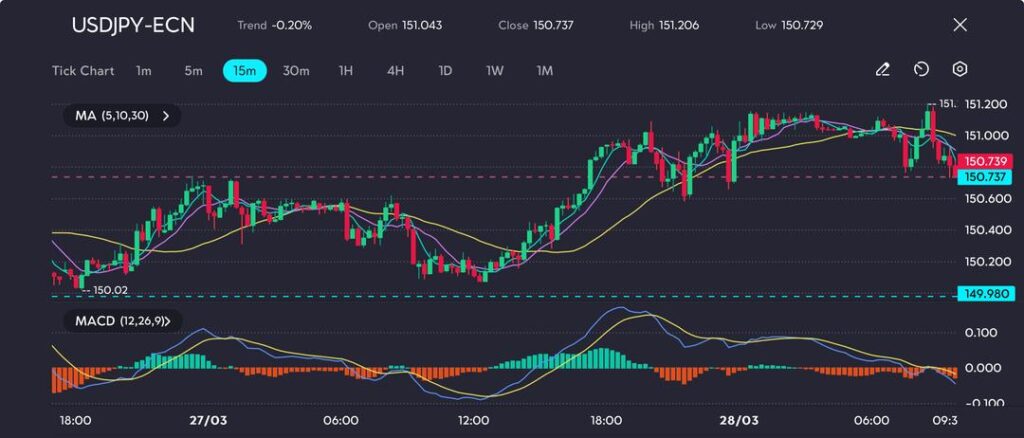
Key Points:
- Tokyo inflation rose to 2.9% in March, beating forecasts of 2.7%.
- USD/JPY pulled back to 150.73 as BoJ rate hike expectations firm.
The Japanese yen edged higher on Thursday, with USD/JPY retreating to 150.73 after touching a session high of 151.206, following a hotter-than-expected Tokyo CPI report that has bolstered expectations for a Bank of Japan rate hike as early as May.
Consumer price inflation in Japan’s capital rose to 2.9% year-on-year in March, up from 2.8% in February and ahead of market expectations for a 2.7% increase. Core CPI, which strips out volatile fresh food prices, also climbed to 2.4%, beating consensus of 2.2%.
Analysts now see building pressure on the BoJ to act, with inflation broadening across categories. Notably in household goods prices (5.2%), clothing prices (3.1%), and medical care costs (2.4%).
These gains came despite easing in fresh food and utility costs, suggesting a transition from supply shocks to demand-driven, stickier inflation.
Technical Analysis
The USDJPY chart on the 15-minute timeframe shows a range-bound structure, with price fluctuating between the 150.02 support and 151.20 resistance over the last 24 hours. The recent rejection near 151.20 suggests strong supply at that level, with the pair pulling back toward 150.73.

Picture: USDJPY struggles near 151.20; range persists as momentum turns bearish, as seen on the VT Markets app
The MACD has shifted to a bearish crossover, and the histogram is fading below the zero line—signaling weakening bullish momentum. Meanwhile, the price is now trading near the 10- and 30-period moving averages, suggesting indecision. A break below 150.60 could expose 149.98 as the next downside target, while bulls would need to reclaim 151.20 to regain control.
With BoJ expectations firming and U.S. data expected later this week, traders may begin to unwind extreme yen short positions, especially if U.S. inflation or growth data disappoints.
Rate Hike Risk Supports Yen
Traders brace for risks tilting toward tightening in May, as second-round effects, such as rising eating-out prices, reflect broader pass-through of earlier input cost spikes.
Markets may begin to price in a less accommodative BoJ stance, which could pressure USD/JPY lower in the coming sessions, particularly if Fed policy guidance softens or Japanese yields begin to climb.
Until then, traders should watch for price action around 151.20 resistance and 149.98 support, with heightened sensitivity to macro headlines, especially from the BoJ and Fed speakers ahead of key U.S. inflation data.









